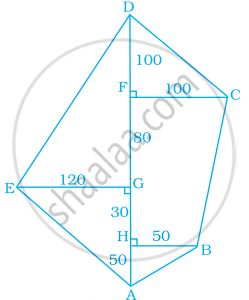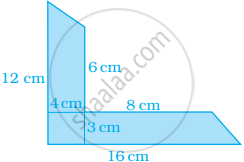Advertisements
Advertisements
प्रश्न
Find the missing values.
| Height 'h' | Parallel side 'a` | Parallel side 'b` | Area |
| 13 cm | 28 cm | 492 sq.cm |
उत्तर
Given the parallel sides a = 13 cm, 6 = 28 cm
Area of the trapezium = 492 sq.cm
`1/2` h(a + b) = 492
`1/2` × h × (13 + 28) = 492
h × 41 = 492 × 2
h = `(492 xx 2)/41`
h = 24 cm
Tabulating the results we get
| Height 'h' | Parallel side 'a` | Parallel side 'b` | Area |
| 24 cm | 13 cm | 28 cm | 492 sq.cm |
APPEARS IN
संबंधित प्रश्न
Find the area of trapezium with base 15 cm and height 8 cm, if the side parallel to the given base is 9 cm long.
Find the height of a trapezium, the sum of the lengths of whose bases (parallel sides) is 60 cm and whose area is 600 cm2.
The cross-section of a canal is a trapezium in shape. If the canal is 10 m wide at the top 6 m wide at the bottom and the area of cross-section is 72 m2 determine its depth.
The area of a trapezium is 1586 cm2 and the distance between the parallel sides is 26 cm. If one of the parallel sides is 38 cm, find the other.
Find the missing values.
| Height 'h' | Parallel side 'a` | Parallel side 'b` | Area |
| 10 m | 12 m | 20 m |
Find the missing values.
| Height 'h' | Parallel side 'a` | Parallel side 'b` | Area |
| 16 cm | 15 cm | 360 sq.cm |
When the non-parallel sides of a trapezium are equal then it is known as
A trapezium with 3 equal sides and one side double the equal side can be divided into ______ equilateral triangles of ______ area.
Find the area of the following fields. All dimensions are in metres.

Find the area of the shaded portion in the following figure.

